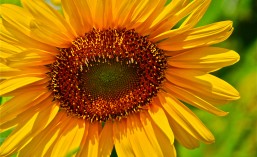Poetry is a rich, full bodied whistle,
Cracked ice crunching in pails,
The night that numbs the leaf,
The duel of two nightingales,
The sweat pea that has run wild,
Creation’s tears in shoulder blades.
~Boris Pasternak
Well, perhaps not every child had such a garden in their childhood, but I wish they had. I did, but the enchanted place was actually all the blocks around our house more than just a single garden. Nevertheless, Lawrence’s description fits my childhood perfectly. For, you see, in southern California where my life began, flowers grow everywhere, and many of the houses, like ours, which were perpendicular to the Pacific Ocean had car-width alleyways behind them. While many of the backyards were filled with all kinds flowers, the fences along the alleys were covered oftentimes with sweet pea vines. So strong an imprint did those images and scents make on my mind, heart, and soul that the memory of them hasn’t faded, not even a smidgen, for the fifty years I’ve been gone from there. Had I known 20 years ago that sweet peas would grow here, I would have started sowing their seeds when I first took up gardening. But it wasn’t until a few years ago that I stumbled across a packet of sweet pea seeds in a nursery and thought what the heck. Why not give ‘em a try?! And guess what? They have done fairly well the years we’ve gotten a good amount of rain and the temperatures haven’t gotten too warm, too quickly. Et voilà! Today sweet peas are abloom on my back fence again! And the halcyon days of my childhood have been flooding the foreground of my memory the livelong day. My oh my, but those were wondrous and wonder-filled times!
By helpful fingers taught to twine
Around its trellis, grew
A delicate and dainty vine;
The bursting bud, its blossom sign, Inlaid with honeyed-dew.
Oh, some may choose, as gaudy shows,
Those saucy sprigs of pride
The peony, the red, red rose;
But give to me the flower that grows Petite and pansy-eyed.
Thus, meditation on Sweet Peas
Impels the ardent thought,
Would maidens all were more like these,
With modesty–that true heartsease–
Tying the lover’s knot.
~Excerpted verses from a poem
by Hattie Howard
Follow God’s example, therefore, as dearly loved children and walk in the way of love, just as Christ loved us and gave Himself up for us as a fragrant offering and sacrifice to God. ~Ephesians 5:1-2 ✝






















